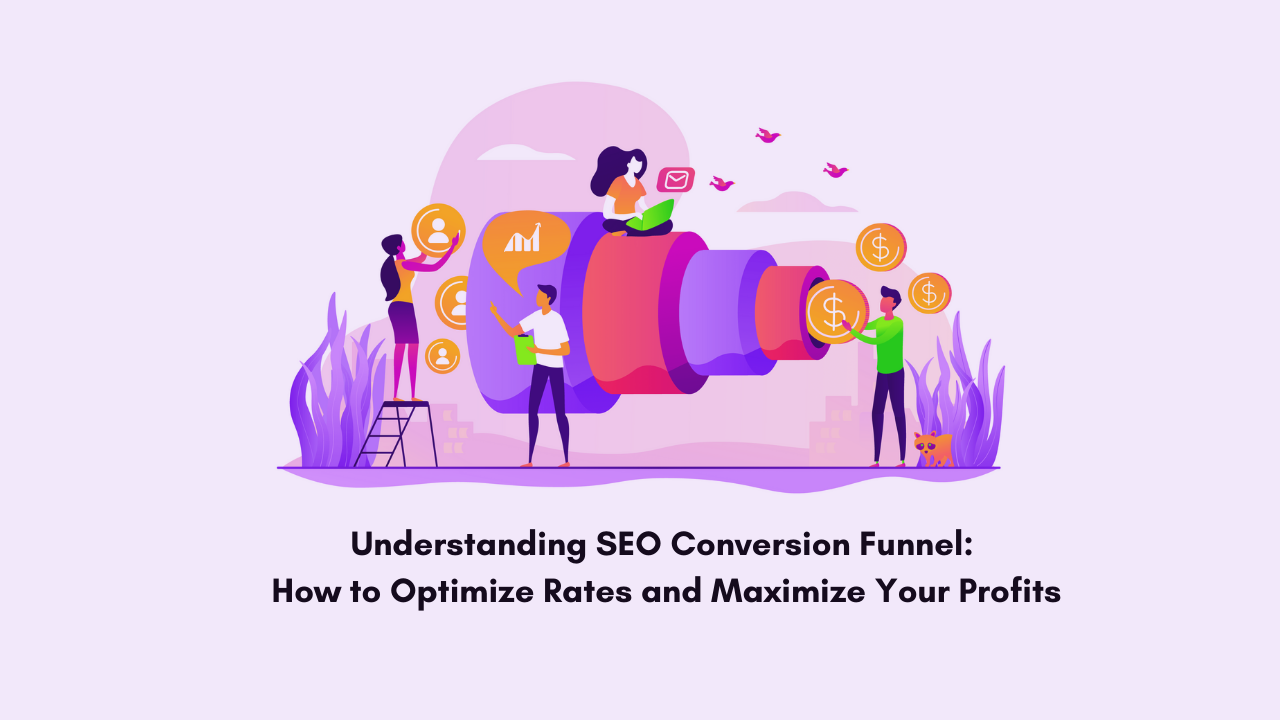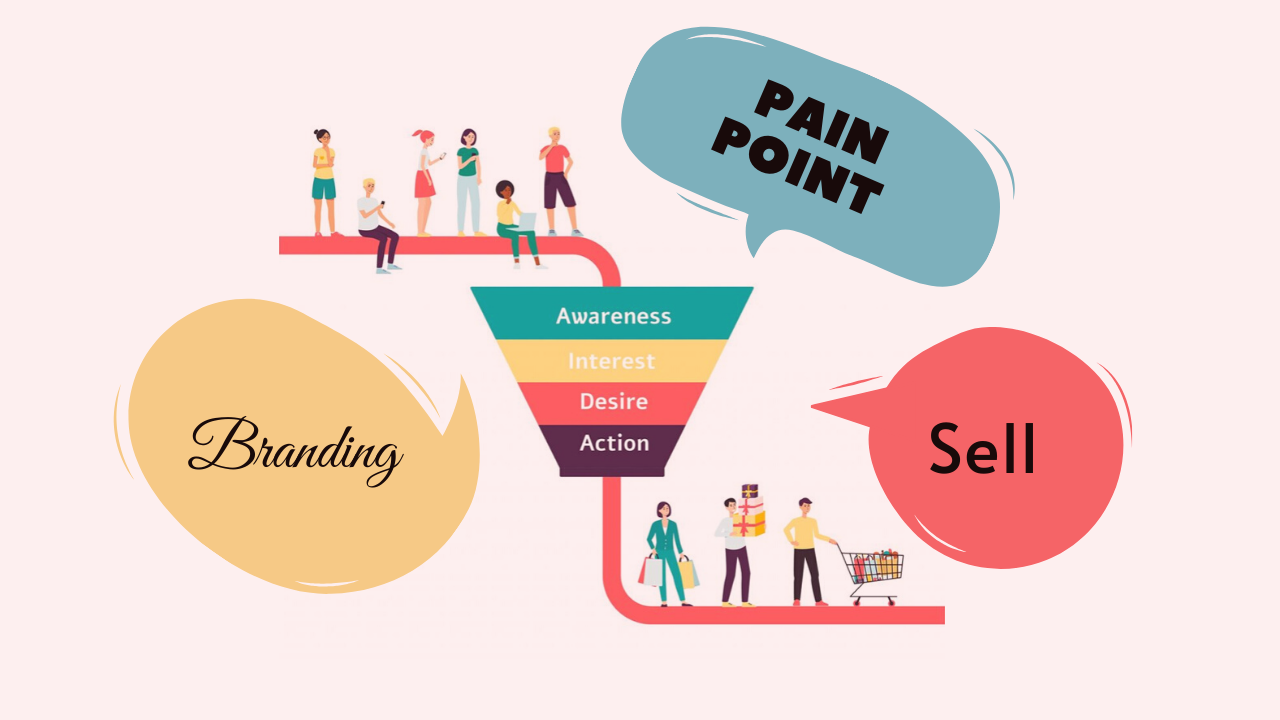Steph W. from SEOPressor


...help you check your website and tell you exactly how to rank higher?


81
score %
SEO Score

Found us from search engine?
We rank high, you can too.
SEOPressor helps you to optimize your on-page SEO for higher & improved search ranking.
By vivian on November 10, 2020
We actually believe you should start by building a high-ROI SEO sales funnel. If you’re new to marketing funnels, we’ll show you how.

Many of you are probably already familiar with the basic benefit of SEO. Your content ranks higher for your targeted keywords, and you end up with more organic traffic on your website.
However, many marketers just focus their optimization efforts there. Thing is, the benefit can go so much deeper if you build and optimize a conversion funnel.
Martin Zwilling, Founder and CEO of Startup Professionals, recently said something that will completely change how you view marketing. Writing for Inc.com, he says; “If you’re still focusing on selling rather than how your customers are buying, you’re missing out on great business potential.”
And, finally, we’re vindicated!
Zwilling is simply saying the same thing we’ve repeated a thousand times by now – that buying is a process. It’s not just about prices. You need a plan for the entire journey – a robust conversion funnel.
Specifically, you can use SEO to engage your target customers as they travel through the conversion funnel. Just imagine if you can rank for all the search terms and queries that correspond to each stage of the conversion funnel, you can engage customers through the entire buying process.
To do this, you need to integrate keyword optimization, strategic content marketing, and clear site architecture to make sure your leads are engaging with you throughout their entire buyer journey.
In this post, we will go through each marketing funnel stages and the work you need to do to build an SEO conversion funnel. So let’s start broad.

There are tons of conversion funnel models out there.
But generally, a conversion funnel is similar to the traditional sales marketing funnel and is works as a visualization to help marketers plan for the different phases of digital marketing.
With a conversion funnel, you know;
More formally, it’s defined as “a way of representing the buyer journey through which prospects go until they make a conversion.”
An SEO conversion funnel is named so because it focuses on organic traffic generated through search engines.
Many companies still market their products based solely on price. To them, selling begins and ends with your lower prices.
How wrong they are!
Although the price is still an important consideration for people who buy, everything about your product can no longer revolve around price. Why? Because the consumer has changed. Digital commerce changed everything.
Today, at the initial stages, web searchers aren’t even thinking about the price yet. In fact, maybe they’re still researching if buying a certain solution would be a great idea. In that case, you’d need to begin by convincing them on the benefits of making the purchase.
An SEO sales funnel is designed to organize your SEO campaign to quietly rope in potential customers and gently “push” them through to conversion.
The SEO conversion funnel has three main parts – the top of the funnel, the middle of the funnel, and the bottom of the funnel. Here’s what you need about each stage.
Also known as the awareness stage, the top of the funnel, this is the stage where you try to capture potential customers. Here, the consumer is just browsing around. Perhaps they don’t even realize they have a problem.
You need to do three things.
First, make them aware of their problem (if they don’t know yet that they have one) or remind them if they’re already aware.
Secondly, make them know the full cost of that problem. How much money are they losing or leaving on the table?
Lastly, let them know there’s a solution to the problem.
It might seem that to engage your leads at this stage, you should target broad key terms and create content that addresses those broad interests.
But that’s not entirely true. Even your broad keywords can stem from your buyer keywords. For example, if you are an SEO company, you can create content on the difference between hiring an SEO and doing it yourself.
Content in this stage should focus on agitating the pain, which in this case should emphasize more on the benefits of hiring an SEO rather than doing it yourself.
The middle of the funnel is also known as the consideration phase. Here, the consumer now understands that they have a problem.
They also know that there’s a solution out there. But, they’re not actively thinking about fixing it yet. It’s not yet a priority.
So, what’s your job? To make it a priority; to convince them to get the solution now.
You want to make them know that they stand to save a lot of money if they fix the problem. Telling them exactly how they would benefit can be invaluable here.
The bottom of the funnel, also known as the decision stage, is where the consumer is convinced about acquiring the solution. Now, all they need to do is choose a product and vendor.
As such, your job is to get them to choose your brand and product. They’re likely to come across endless ads and check out lots of websites. You need to convince them to choose you!

You’ll need to focus on specific content types and keywords for each stage of the SEO funnel. Here are a few tips;
In the awareness stage, focus on content that makes the consumer aware of their situation and potential solutions. Some of the best performing content options for this stage include;
With regards to keywords, “prevent,” “improve,” and “troubleshoot” work excellently as they encourage the consumer to rethink their position.
In the consideration stage, you need content that encourages the consumer to start thinking about getting the solution. Some content options that work extremely well here, therefore, include;
As for keywords, popular options include “provider,” “service,” and “tool.” Essentially, you want to use words that tell consumers that a solution exists for their problem and that they should acquire that solution.
Finally, in the decision stage, you want to focus on content that helps the consumer choose the right solution and vendor (ideally your products). So, consider;
Some of the best keywords for this stage include “pros and cons,” “compare,” and “review.” “Free Trial” and “Test” are other words/phrases you should consider.
Beyond content and keywords, you also need to develop a flawless Information Architecture (IA) for easy and fast discovery of and access to your resources.
The Search Engine Journal has created a detailed guide on how to approach IA. In a nutshell, you need to focus on;
The goal is to provide the right content and use the right keywords for each stage of the funnel. Links play a central role in mapping the journey. Using links, you can direct the consumer through the different stages of the funnel until they finally convert.
There are several steps you can take to optimize your SEO conversion funnel for search engines. Consider the following;
Every digital marketer needs a plan to generate the right traffic, drive leads, and convert sales. An SEO conversion funnel is an answer to this need. A well-designed SEO funnel attracts the right readers (in their numbers) and keeps them in the loop, right to conversion.
Updated: 6 January 2026


Save thousands of dollars (it’s 100x cheaper)

Zero risk of Google penalty (it’s Google-approved)

Boost your rankings (proven by case studies)
Rank High With This Link Strategy
Precise, Simplified, Fast Internal Linking.
